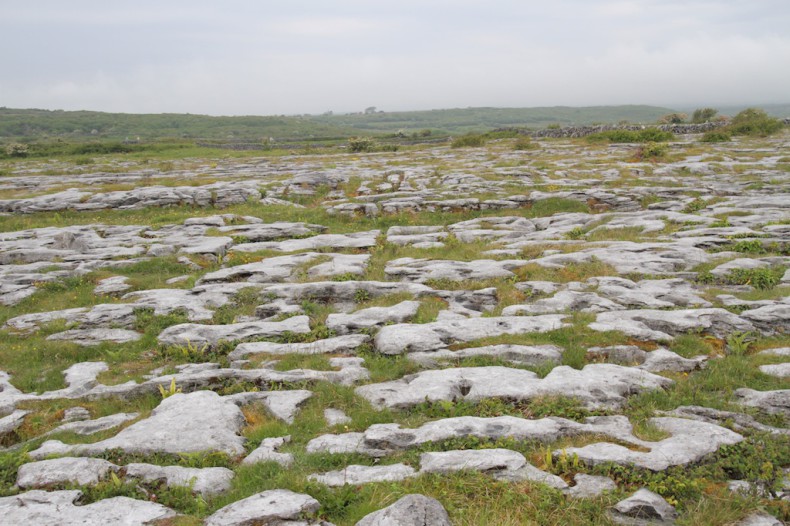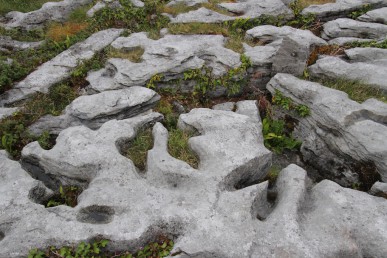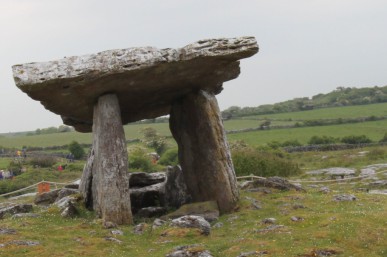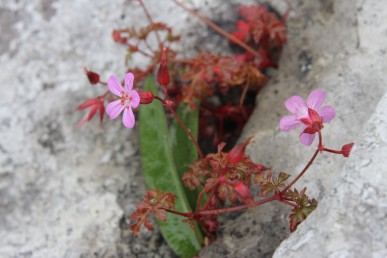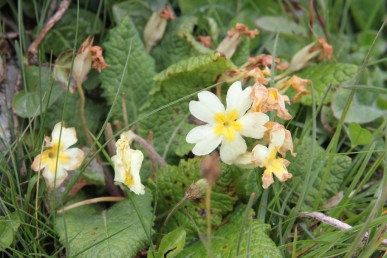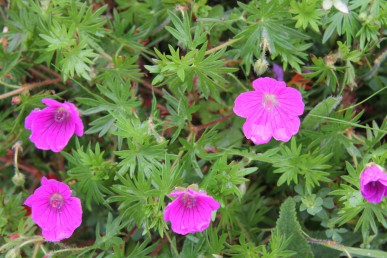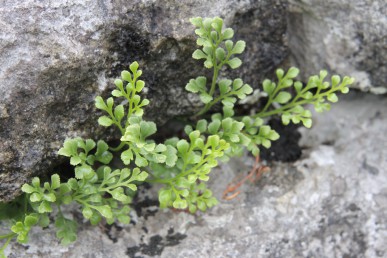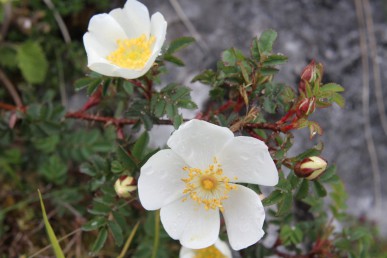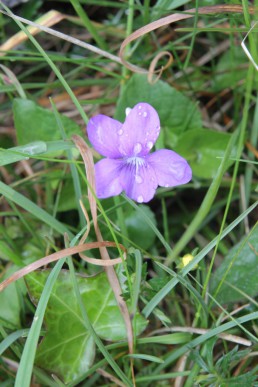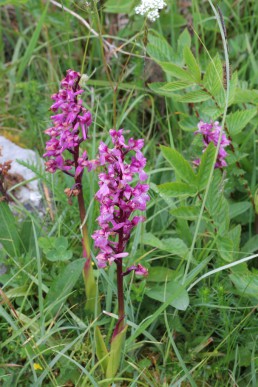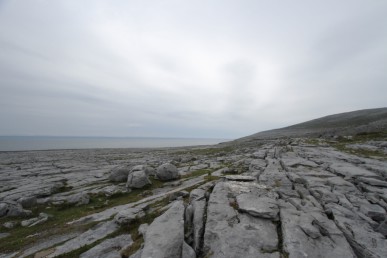This beautiful wild region of Ireland is unlike anywhere I have seen before. Located in the north-west corner of County Clare on the west coast, even its Irish name boireann signals the topography, as it means ‘place of rocks’. Covering 250 square kilometres, the exposed limestone is in some places up to 780 metres thick. Since being laid down progressively up to 340 million years ago, these great slabs have been gradually worn away in places, mainly by glacier movement, creating ‘grikes’ (the cracks in the limestone) and ‘clints’ (the blocks of limestone left behind). At the same time, the glaciers deposited rounded boulders in random positions, these are known as ‘erratics’ (see the last photo for and example). I love the names! This region is dotted with ancient ruins and tombs as well as being a natural paradise.
The grikes make perfect sheltered spots for a myriad of different tiny wildflowers to grow. When I was there at the beginning of summer, many of these were in full flower. Many others though hadn’t quite reached their peak after a really cold spring. The pale blue-grey limestone contrasts perfectly with the various greens and vibrant flower colours.
My first sight of this fabulous region was on a visit to the famous Poulnabrone portal tomb, dating back to nearly 6000 years ago. And as wonderful and fascinating as this was my attention was quickly drawn to the plants around me. I wandered off, frequently on my hands and knees, inspecting each plant. My daughter Ellen with wild flower book in hand, reading out descriptions comparing them with the plant I had located. It was wonderful to find many of the herbs I had been writing about, and growing, for years, growing wild in this remote and beautiful place. And if they weren’t the actual plants they were close relatives. I could imagine the people who had constructed the tomb, using these herbs to flavour food or treat ailments.
These wild plants only survive in the grikes because during winter cattle are released to graze these rocky pastures, this practice is known as winterage. The cattle graze on these mineral rich grasses which is great for their health, but it also stops the grasses from overwhelming the wildflowers that appear in spring. Maintaining this delicate balance is essential to the unique Burren landscape.
The Burren contains over 70% of Ireland’s native plant species. On the pavement surfaces (the clints) grow plants such as wild thyme (Thymus polytrichus), wood sage (Teucrium scorodonia) and wall lettuce (Mycelis muralis), while in the grikes are tiny ferns (Asplenium species) as well as herb Robert (Geranium robertianum) and common violet (Viola riviniana). Other flowers seen were gentians, milkwort, lady’s bedstraw, harebells, Burnet roses, primroses and bloody cranesbills. And we were even lucky enough to see some orchids, the early purple (Orchis mascula). It goes without saying that this area is protected and these plants should never be picked. If you are interested in them then try growing them at home.
I hope the pictures give you an indication of this beautiful and fascinating place; a place out of time.

